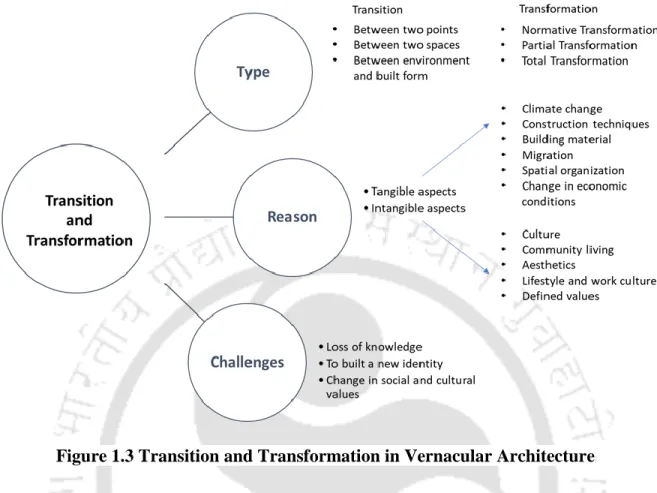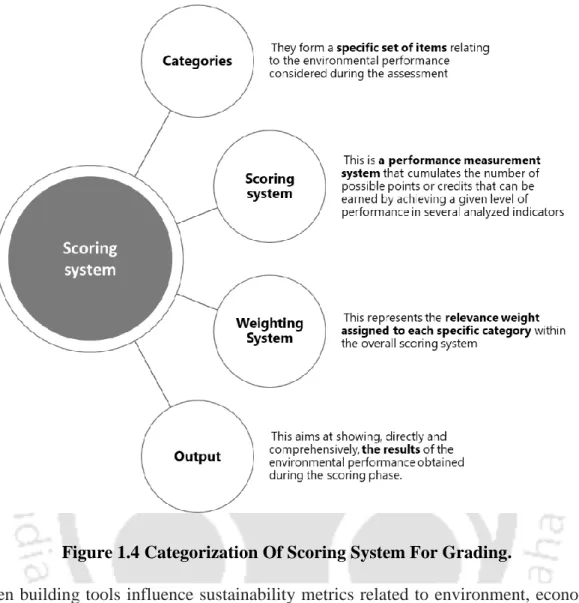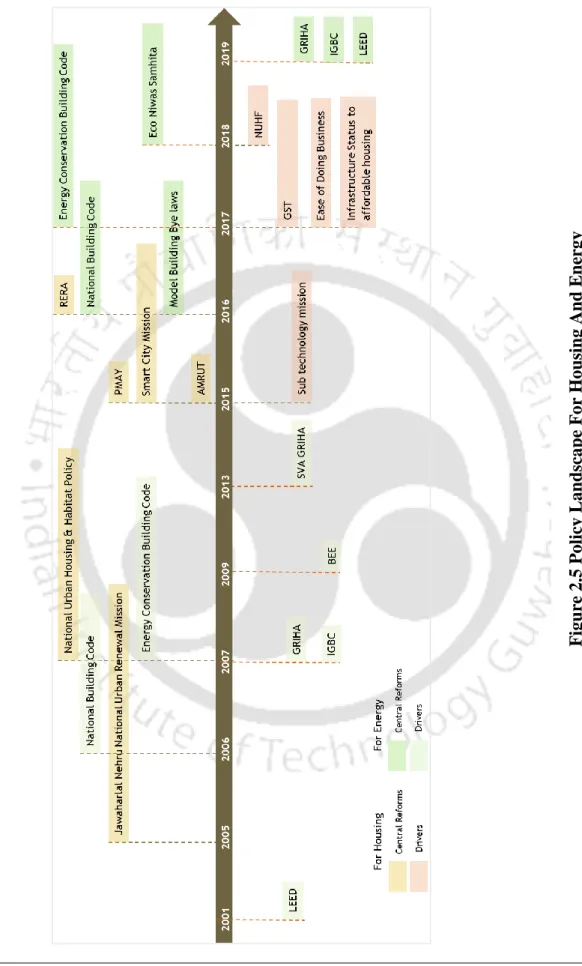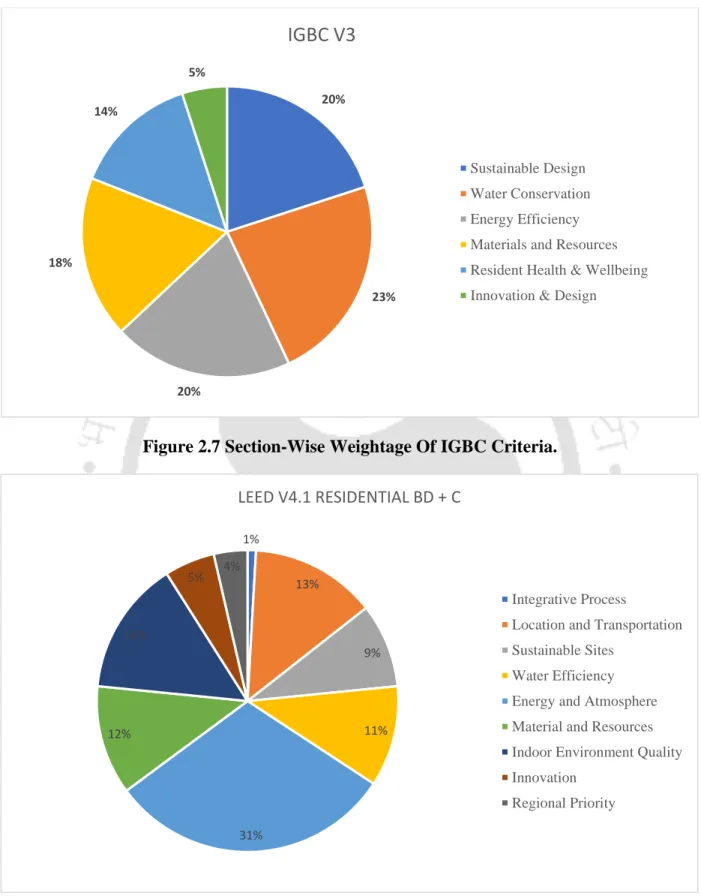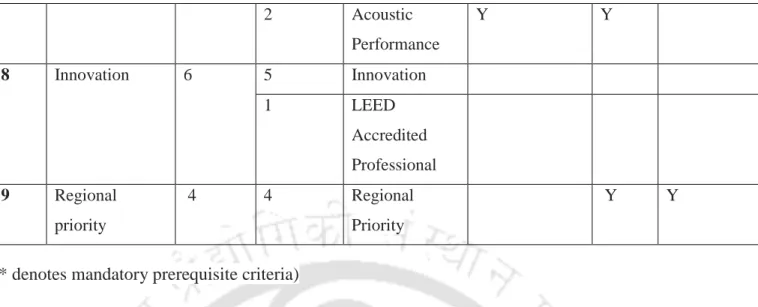You never tried to change my thinking process, you constantly helped me evolve and encouraged me to see things differently. It makes me think and realize that when a man can conquer his mind, he can conquer all. Finally, I would like to thank the creator of the universe who helped me manifest dreams and have faith in the greater force that drives us all.
INTRODUCTION: The Sustainability Context and Research Background
Introduction To Sustainable Development
Three Pillars Of Sustainability
Environmental sustainability is the ability of the natural environment to support human life while remaining robust and productive. This is done so that balance can be maintained within the limits or limitations of the earth systems.
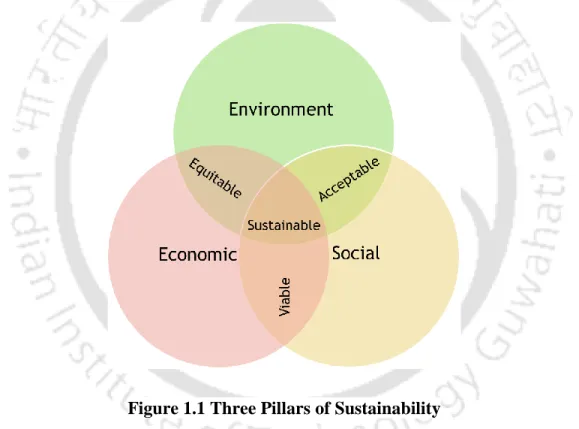
Sustainability In The Built Environment
- Global And Indian Context On Sustainable Development
- Vernacular Architecture And Sustainability
- Social And Cultural Aspects In Buildings
- Sustainability Assessment Practices
The people can learn from the most resilient type of architecture - the local traditions - when. Most Sustainable Development Goals (SDGs) recognize the role of culture, including those focused on quality education, sustainable cities, the environment, economic growth, sustainable consumption and production patterns, peaceful and inclusive societies, gender equality and food security, according to Unesco (UNESCO , 2015).
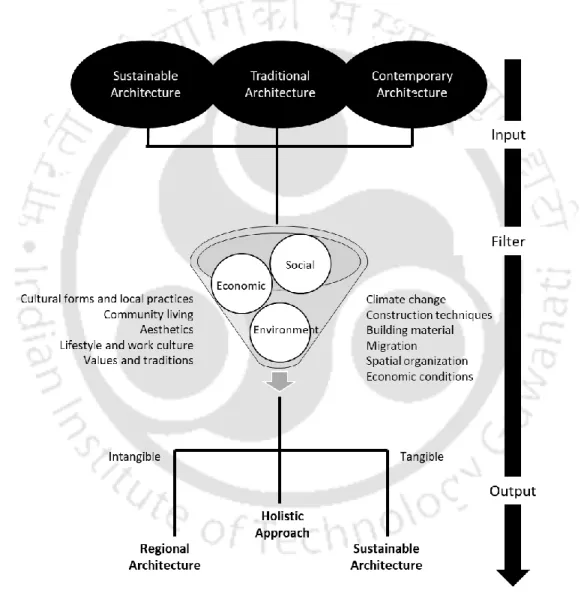
Chapter Conclusion
Developed by the Indian Green Building Council (IGBC), Green Homes is the first rating system designed specifically for the housing sector in India (IGBC, 2019). The International Green Building Council (IGBC) has also created a green building rating system for affordable housing and green living (IGBC, 2019).
Research Background
- Research Gap
- Aim, Objectives, And Research Questions
- Scope Of The Study
- Overview Of Research Methodology
What sustainable design assessment tools are available in developed and developing countries and how they have integrated socio-cultural indicators. Through secondary data analysis and data collection, the research determines the finding of relevant socio-cultural indicators that are defined by the user.
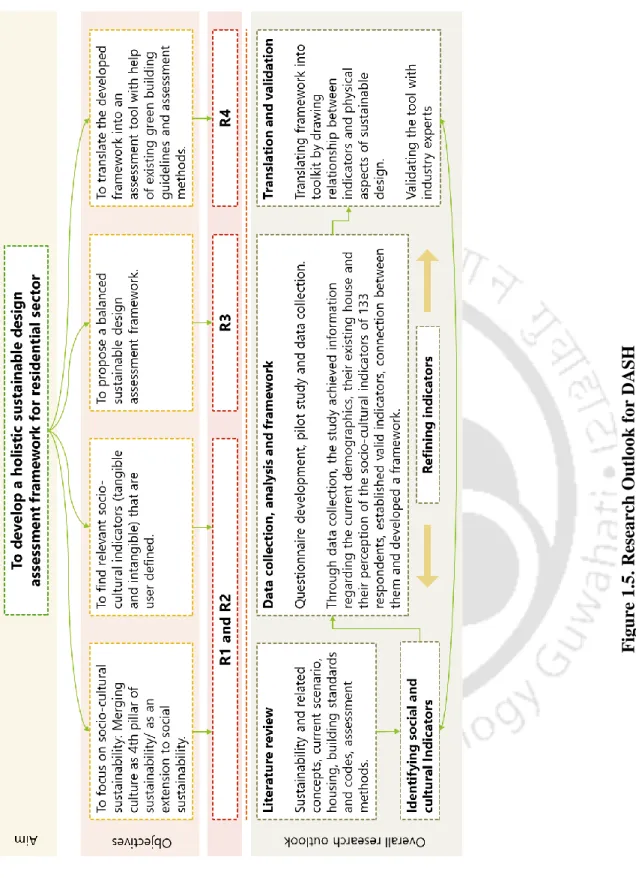
LITERATURE REVIEW: Building Codes, Rating Systems, And Sustainability
Introduction
Building Codes, Standards, And Policies
- Overview Of Housing Policies And Other Reforms
- Overview Of Energy Policies And Other Reforms
The Government of India established the Atal Mission for Rejuvenation and Urban Transformation (AMRUT) to improve the quality of life for all especially the poor and underprivileged by providing basic public services such as water supply, sewerage, urban transport and parks (MoHUA, 2014). The Government of India created the Energy Conservation Building Code in 2007 to promote energy efficiency in the construction industry.
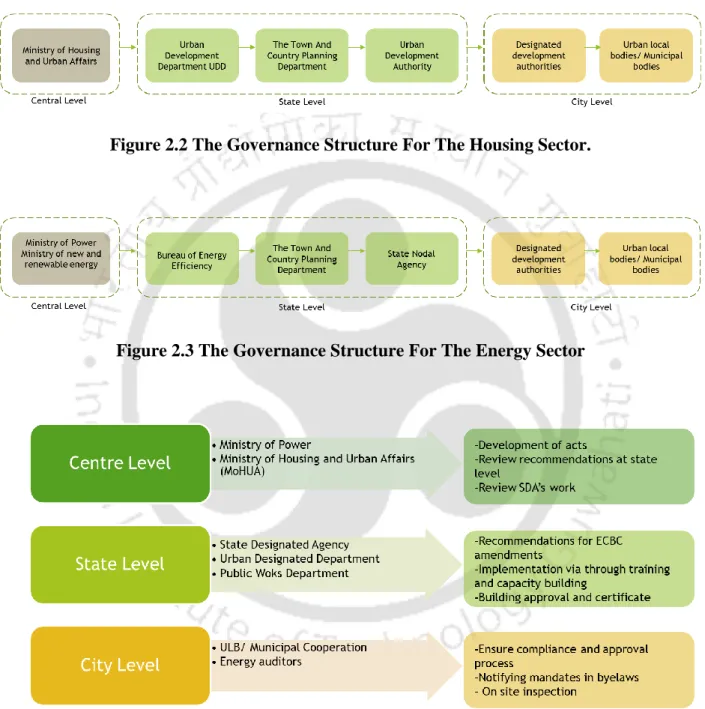
Introduction To Green Building Rating Systems
- Indian Rating Systems
- International Rating Systems
- Review Of Indian Rating Systems On Sustainability Indicators
- Review Of Rating Systems On Sustainability Assessment
- Discussions
The council provides various services, including the creation of a new green building rating system and certification services (IGBC, 2019). LEED (Leadership in Energy and Environmental Design) is the most widely used system for rating environmental buildings globally. Moreover, the Indian green building rating system symbolizes the national rating system of the research case study.
The analysis shown above represents the three green building rating systems adopted for India and their analysis regarding pillars of sustainability. The current green building rating system has a great influence on environmental aspects such as energy, resources, site context and similar categories with multiple terms in different rating systems.
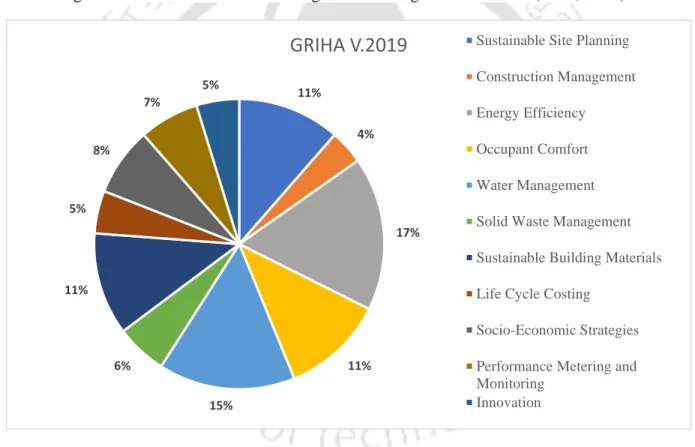
Understanding Social And Cultural Indicators
- Tangible and Intangible Indicators
- Relationship between indicators
From the above framework, the study clearly shows that social and cultural indicators are not a significant part of the policy database. These indicators are mentioned in the green building rating systems and have been introduced in recent versions. To achieve the required social and cultural indicators, the study understood how these indicators are developed over a period of time and proceeded with the best possible indicators suitable for our scenario.
Through this in-depth study, the researcher selected some representative attributes that cover the social and cultural aspects of sustainable evaluation. The smaller bubble here represents the broader attributes or zones of social and cultural aspects, and the rectangular frame indicates the qualities of these attributes.
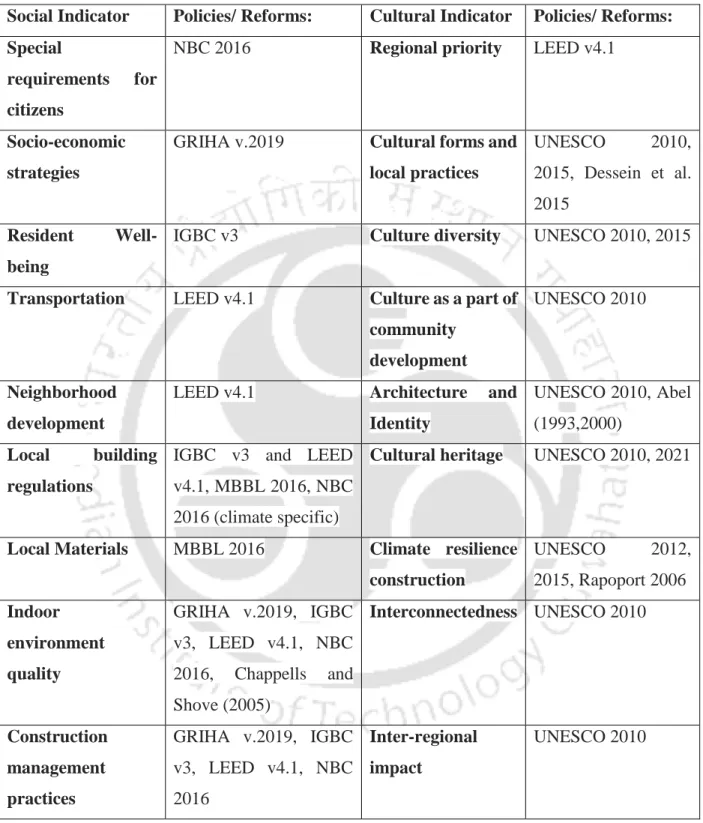
Chapter Conclusion
After the study, the researcher analyzed that it is applicable to identify, recognize and select social and cultural indicators. After an in-depth study of the parameters of Indian green building assessment methods and social and cultural sustainability, the study can conclude the presence and possibility of identifying tangible and intangible aspects in both categories. Piparsania, in her research, emphasized how social and cultural elements are integrated into existing systems and that it is possible to identify, understand and apply these social and cultural indicators for a more sustainable approach (Piparsania K. & Kalita, 2021).
In order to achieve social and cultural indicators, the process must understand how they have evolved over time and how they have continued with the best possible indicators that fit our scenario. Education and awareness, Neighborhood density and diverse use, Neighborhood development, Well-being facility, Visual amenity, Universal accessibility, Positive social impact.
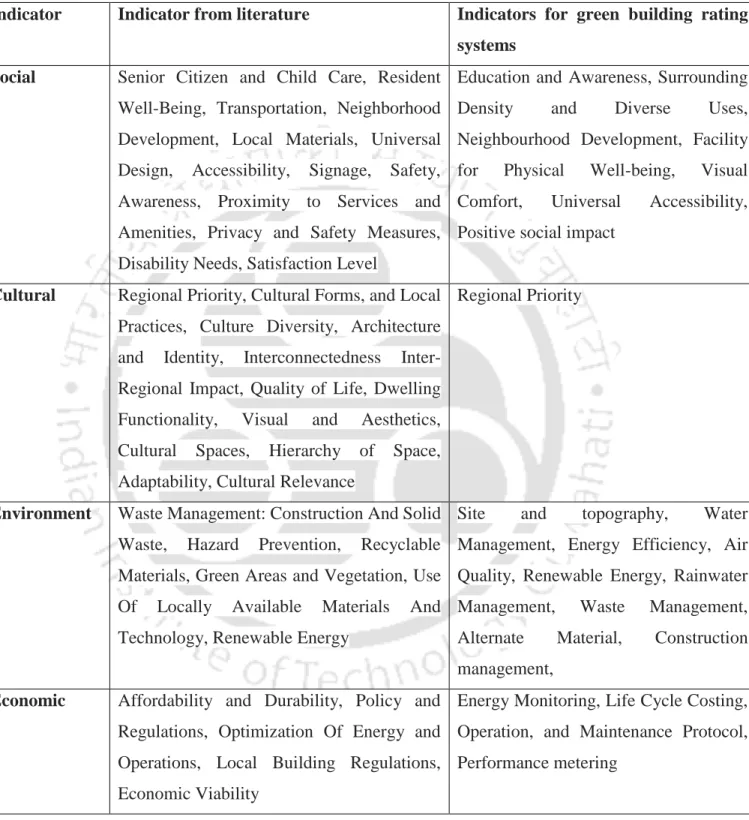
RESEARCH METHODOLOGY: Methods and Survey Results
Introduction
Research Methodology
A pilot study is conducted in the initial stages to understand the purpose of the questionnaire, the user's behavioral response and their meaning. Residents' and residents' requirements were collected with the help of a structured questionnaire based on the survey method. A theoretical framework focuses on the identified variables and defining the specific perspective formulated from the study of user behavior and secondary data.
Design brief Translate the developed framework into an assessment tool using existing green building guidelines and assessment methods. Additional validation was conducted to improve the user experience of the tool, followed by open and closed questions.
Questionnaire Development And Reliability
Phases and Methods in data collection
- Pilot study
- Survey And Data Collection
- Data Analysis
Before completing the questionnaire, the respondents are informed about the intention and objectives of the survey. The document also has the option to upload images of the house for better understanding. The data collection and analysis segment is divided into three main phases, as shown in Figure 3-10.
The residents were initially informed about the study's motive and objectives and, more importantly, how it would use the information shared at the beginning of the data collection. The following graphs, figures below depict the nature of the data collected and their responses.
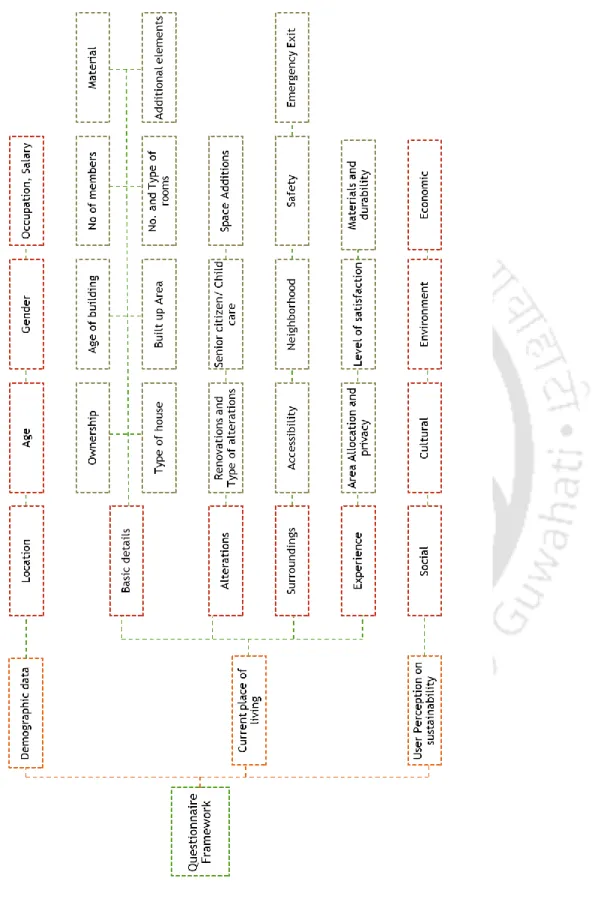
Data Testing
- SPSS Correlation
Limitations Of The Study
Chapter Conclusion
The results and a more thorough discussion of the research's conclusions are presented in the following chapters. To translate the developed framework into an assessment tool using existing green building guidelines and assessment methods.
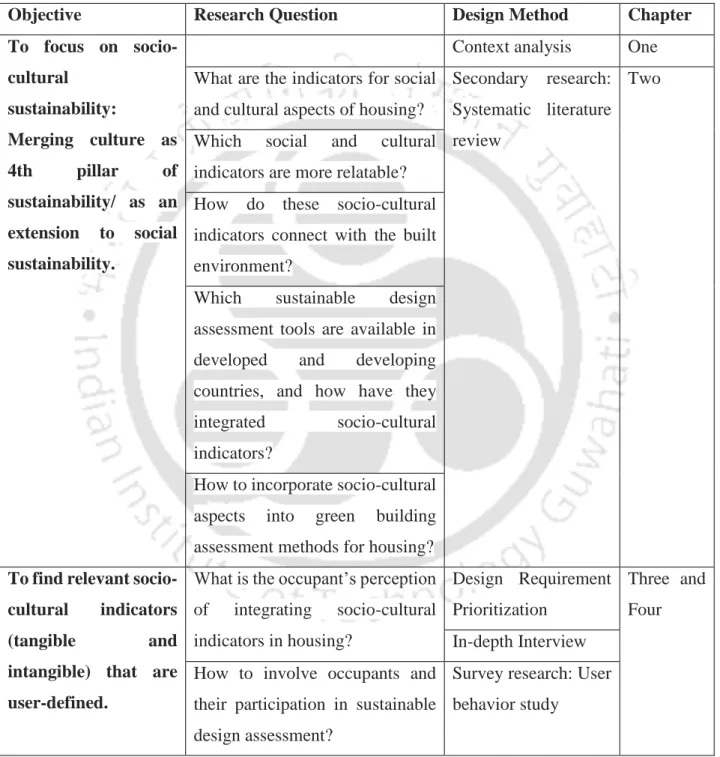
RESULTS AND DISCUSSIONS: Design And Development Of DASH
Sustainable Design Assessment Framework
- Defining The Framework
- Development Of Framework
- Refinement of the framework
- Chapter Conclusion
This study aims to create a socio-cultural framework for housing based on a rational collection of complementary physical and immaterial variables. The social and cultural indicators of the primary research are supported by secondary data collection, which also shows that existing sustainability frameworks and policies, evaluation tools and guidelines lack socio-cultural elements and their integration. The research fills knowledge gaps by showing how intangible socio-cultural indicators and tangible design standards relate to each other and how they can be incorporated into frameworks for the assessment of sustainable buildings.
The study deals with concerns that help the academic and practical implementation of sustainable design assessment in understanding and reflecting on socio-cultural indicators. The learning illustrates that sustainable housing includes and focuses on the residents' socio-cultural values.
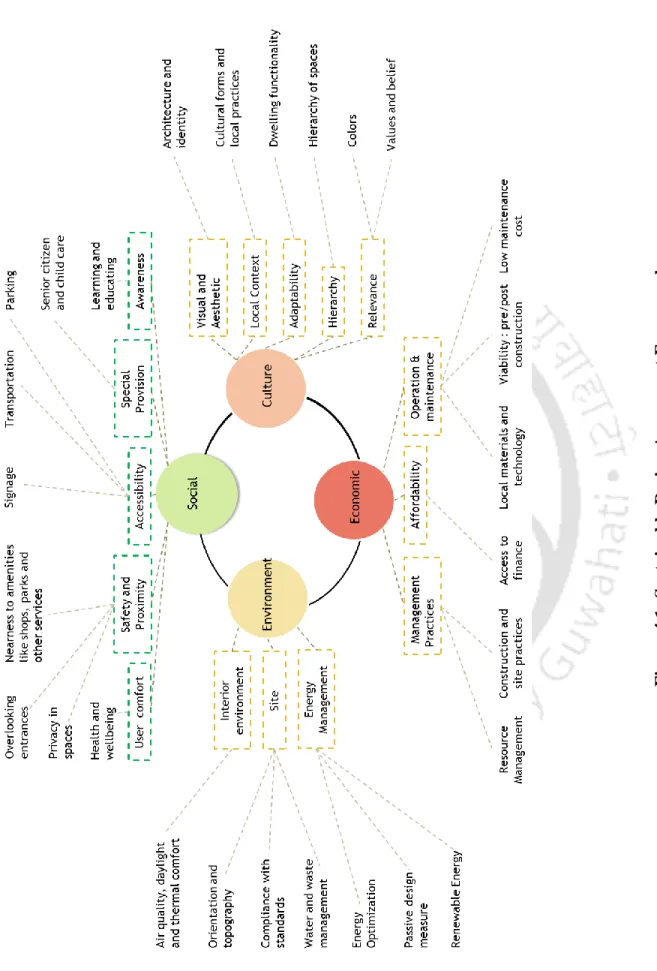
Sustainable Design Assessment Tool
- Defining The Assessment Tool
- Adoption And Translation Of Framework
- Structuring And Benchmarking Of Tool
- Development Of Tool
- Tool description and user guide
The selected best practices are refined based on their application and the tool's scope for a balanced, sustainable design approach. They are moderately or not fully covered by the Indian green building rating system. The assessment tool represents key issues identified and validated through a survey that bridges the gap and creates a holistic framework for sustainable design assessment. The proposed solution and design guidelines are the outcomes of intense research, survey and analysis. The tool covers seven categories of effect, identified as the most important potential to reduce a building's environmental impact and eliminate the frequent problems and obstacles in a balanced, sustainable design.
Each of the seven categories is divided into several subsections for an in-depth approach to meet the need. If the user wants to use and test the tool for personal projects, you can ask for an editable file.
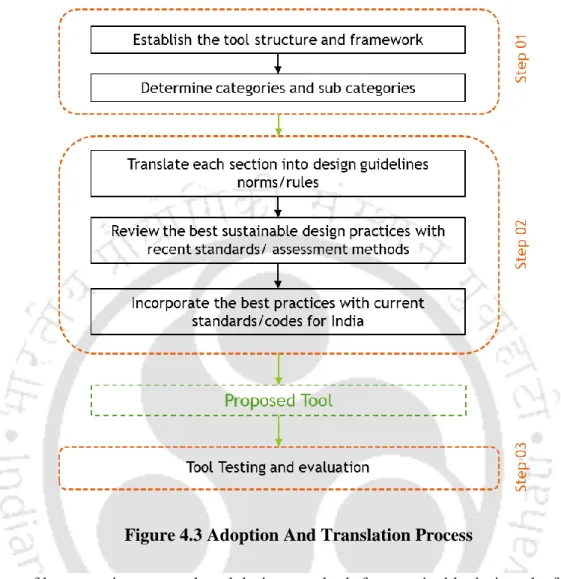
DASH : Testing And Validation
- Tool Validation : Process
- View Of The Practitioners
- Reflection On The Feedback
- Feedback Of The Respondents
- Usability Testing: Phase I and II
In the tool validation process, the respondents are further asked to complete a feedback form after reviewing the tool and having conversations through phone calls. So they each used the tool independently and had different expectations of what it would accomplish. Good to see the tool in Excel; it makes it easier to use and calculate.
This additional validation was undertaken to improve the user experience of the tool, followed by open and closed questions. Both versions of the instrument are presented in the annex section for a clear view. Details of the heuristic evaluation can be seen in Table 4.1.
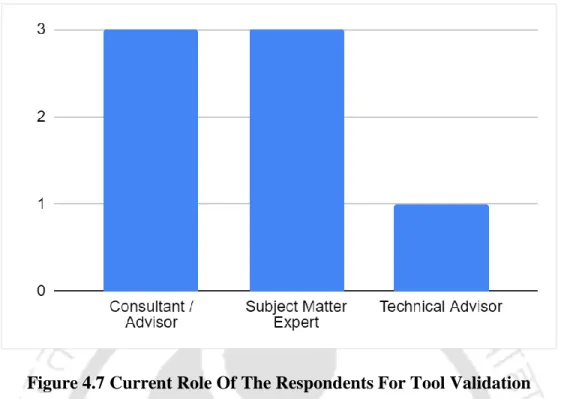
Chapter Conclusion
All observations were considered and the versions further validated and corrected for the optimal experience. The system status is only visible in Tab 03, Division and Checklist, where the user can see how many sections are open. The design is highly structured and easy to understand with a simple and easy to understand template.
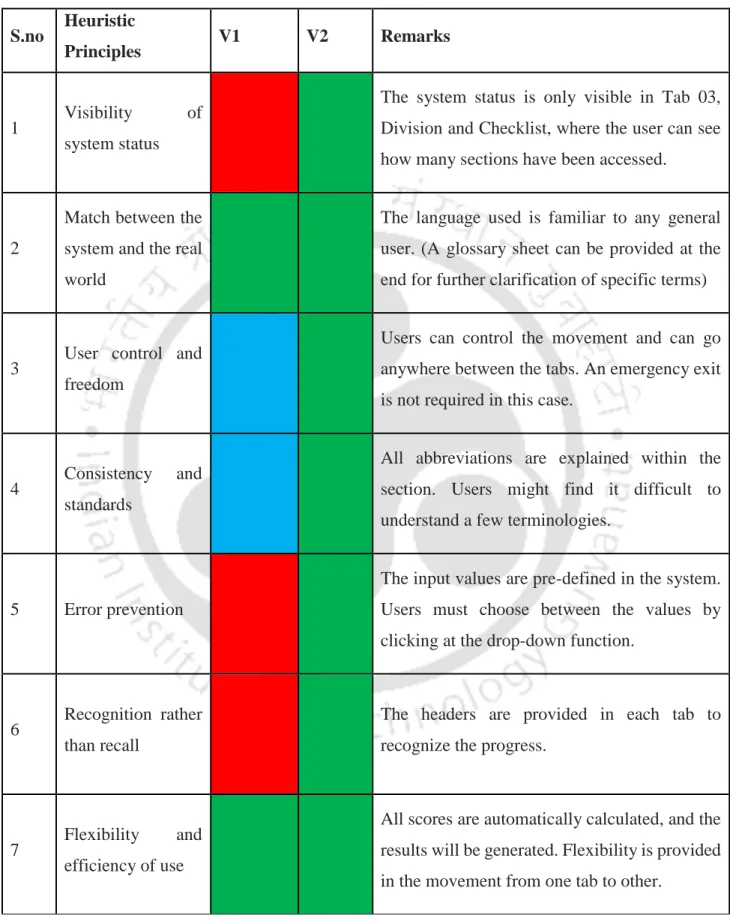
Conclusion and Way Forward
- Summary Of The Study
- Summary Of The Contribution
- Limitations And Future Scope
- List Of Publications
Thus, the final list of indicators to be considered for the study to develop the framework was created. The foundation of the study is based on the concept of sustainability as suggested by the Brundtland Commission, which is based on three pillars: environmental, economic and social. The first objective of the study is to focus on socio-cultural sustainability: the fusion of culture as an extension of social sustainability or considering culture as the fourth pillar.
The fourth objective of the study (to translate the developed framework into an assessment tool using existing green building assessment guidelines and methods) was achieved by transferring the developed framework into an assessment tool using existing green building assessment guidelines and methods. The study addresses concerns that assist both academic and practical implementation of sustainable design assessment in understanding and reflecting socio-cultural indicators and developing a toolkit with current architectural practices.
Effects of socially responsible supplier development and sustainability-oriented innovation on sustainable development: Empirical evidence from SMEs.
ANNEXURE
- Annexure A: Pilot study questionnaire
- Annexure B: Data collection user guide
- Annexure C: Tool Validation
- Annexure D: DASH V1
- Annexure E: DASH V2
Do you have any of the following elements at home? you can select more than one option). The tool and validation intent were shared at the beginning of the tool validation process. The tool was shared as an Excel file with the respondents so that they could test it efficiently.
Please rate the following statements based on the tool's effectiveness and usability on a scale of 1 - 5, with 1 being very poor and 5 being excellent. o The user finds the tool to be productive. o The tool must take a reasonable amount of time to be used o The tool is easy to understand in design and structuring o The tool is easy to use and navigate between categories o The tool is informative and resourceful. If you want to use the tool and test it for personal project, you can ask for an editable file.

